In February 1909, Capt. Archibald Willingham Butt was charged with converting part of the White House stables on 17th Street in Washington, D.C., into a garage. That garage would house the first White House vehicle fleet: a 1909 White Steamer, a 1908 Baker electric, two 1908 Pierce-Arrow Vandelettes and two motorcycles for the Secret Service.
Although the first White House fleet drivers were a combination of civilian drivers from the vehicle manufacturers, and Quartermaster Corps chauffeurs detailed from the War Department, military personnel were detailed for weekend executive driving duty during the Hoover administration, from 1929 to 1933. A century later, those weekend details have transformed into a 24-hours-a-day, seven-days-a-week operation, staffed exclusively by Army noncommissioned officers.
Today, the fleet that began in horse stables makes its home in downtown Washington, surrounded by hotels, shops and restaurants. The garage houses a fleet of White House vehicles. It is home to the White House Transportation Agency, and workplace to the Soldiers who support its mission.
"The WHTA provides a fleet of motor vehicles, master drivers and transportation services to the First Family, White House staff, and official visitors of the First Family in the Washington D.C., area," according to the agency's mission statement. It also provides all facets of transportation support for presidential motorcades and travel-to include cargo handling for the president and those who travel with him-stateside and abroad, as directed by the White House Military Office.
The WHTA is a component activity that belongs to and is supported by the U.S. Army Military District of Washington, whose other component commands and activities include the Joint Personal Property Shipping Office (Washington), Arlington National Cemetery, Army Air Operations Group, the U.S. Army Band "Pershing's Own," and the 3rd U.S. Infantry Regiment, "The Old Guard." MDW oversees each of its subordinate organizations, and works with them to develop detailed planning and flawless execution of ceremonial support, frequently drawing from all service branches.
The agency's Soldiers also work closely with the Secret Service, White House Military Office, State Department, embassy representatives, various other agencies and the president's staff, to ensure that when the president and those closest to him travel, everything goes as planned.
"Every Soldier here must be committed to excellence and maintain a singular focus on attention to detail. The standard here is presidential quality," said Lt. Col. Marc Mueller, director of the WHTA and its only commissioned officer. "Soldiers must understand the nuances of the mission, and exercise discretion and sound judgment at all times."
That's why master drivers, the most visible members of the WHTA team, undergo highly specialized training that prepares them for any situation.
As in any Army unit, all Soldiers who report to the agency must complete in-processing and familiarization training, but the WHTA takes that process to the extreme.
"The Soldiers arrive, and they get their basic briefings and training on policies, and some of it is typical. But they also get the White House Transportation Agency-specific mission training and familiarization training with the Secret Service," said Sgt. Maj. David Simpson, deputy director of the WHTA. "That's when they start to realize where they are."
All drivers are motor transport operators by military occupational specialty, but they don't even get behind the wheel until they've had several "right-seat rides" with an experienced master driver, Simpson said. Once they've learned things like key locations, traffic patterns and how to get around the nation's capital from the passenger's seat, each new driver completes the 540 hours of city-familiarization training required to become a master driver.
Master Sgt. Valarie A. Moorer, one of two transportation movement supervisors, or "shift supervisors" as they're known within the agency, found the first stage of training helpful. "Even if you don't have a great sense of direction, you spend a lot of time behind the wheel, and you are able to navigate using landmarks because you know the area so well."
Once they've learned the intricacies of driving in Washington, Soldiers attend the U.S. Army Military Police School's Antiterrorism Evasive Driving Course at Fort Leonard Wood, Mo. There, they learn the ins and outs of vehicle dynamics and control, evasive maneuvers, terrorist attack recognition, route analysis, technical driving and motorcade driving.
"The training really heightens your awareness," said Master Sgt. Julio C. Maldonado, the other "shift supervisor" at the agency. "You get a true understanding of the feel and mechanics of a vehicle. You learn how, when everything else is out of control, not to lose control,"-valuable skills when you are responsible for keeping high-profile "principals" safe.
Another USAMPS course WHTA Soldiers complete is Protective Services Training, which Maldonado said focuses on all elements of protective operations, to include doctrine and terminology, coordination and mission planning, and protective services in a hostile fire zone.
Specialized training from outside the Army includes a mobile force protection surveillance course, flight-line procedures to properly operate vehicles on flight lines like the one at Joint Base Andrews Naval Air Facility Washington (formerly Andrews Air Force Base)-home to Air Force One-and a variety of training with the Secret Service. In addition to the job-specific training, the WHTA members also keep their Army skills sharp for when they return to a regular Army unit. They maintain tactical proficiency via training opportunities like improvised explosive devices training and the Humvee Egress Assistance Trainer, and continue to develop as professional leaders through NCO and other military schools. "These Soldiers are still expected to know everything their peers have learned in the four years they've been here," Simpson said.
During the first six months on the job, Soldiers familiarize themselves with the agency and its inner-workings, and are assessed for strengths and weaknesses while performing as master drivers on missions within the U.S. "We typically have dozens of missions a day within the National Capital Region, so we are busy, nonstop," Moorer said.
There are two "shifts" in place to support the 24-hour operations. If one shift knows it needs more support, the other will provide it. "We are a true family here, and we help each other out," Moorer said.
While a Soldier may begin as a shift driver, the agency offers career progression opportunities at every level.
After six months, master drivers are considered for duty as senior master drivers, and if selected, will support WHTA missions overseas. As senior master drivers, NCOs start learning how to work with other organizations, like embassies and the Secret Service, to set up overseas missions.
After a year, individuals are looked at for other jobs, such as chief of the operations center. Known as "The Box," the operations center is constantly in action monitoring transportation requests and communications, tracking changes, and staying abreast of the latest traffic situations throughout the city. The e-mails and telephone calls are never-ending in the square room that overlooks one floor of vehicles at the WHTA, but those who work within its walls see a different side of the agency. "All things go through The Box. It is the heart and soul of the agency," said Moorer.
If Soldiers are successful in The Box, they are then eligible to serve in special billets, such as agency recruiter, assistant transportation management supervisor or member of the Air Force One advance team.
The Air Force One advance team travels ahead of the president to coordinate all ground transportation prior to the executive party's arrival. As with most positions within the WHTA, there are two phases to becoming an advance team member, Simpson said. The first phase is the training phase, when they work with the experienced Soldiers to get proficient. The second is the certification check-it's that Soldier's mission, but they are accompanied by a master sergeant who observes them, then certifies them 'Air Force One advance.'"
By the time WHTA Soldiers hit the three-year mark, they have usually filled many positions, and gained a detailed, "big picture" understanding of the agency, Simpson said. For those who reach master sergeant, the premiere agency jobs are Air Force One command representative or transportation management supervisors.
The transportation management supervisors are responsible for the Soldiers assigned to their shift, as well as everything pertaining to that shift. "You are always planning for contingencies," Moorer, the first female Soldier to hold the position, said.
"Being a transportation (management) supervisor, you see operations from a support point of view. You see the meat and potatoes of the mission, and you understand the how and why," Maldonado added. And the "how and why" can change from moment to moment.
During the 2009 inauguration season, for example, the Soldiers of the WHTA lived at the garage-literally-to ensure every detail was taken care of.
The Air Force One command representative's job is dynamic during any administration; the more the president travels, the more involved it becomes. Master Sgt. Angel L. Barreto fills that role, and described it as a "maze of logistics."
Barreto is the agency's representative on the president's official plane for each trip. Every time the wheels go up, he's on board. He is responsible for coordinating everything from cargo loading and unloading to working with the advance team and other agencies to make sure things are in place for the return trip. "If anything goes wrong or right, I'm the person they come to.
"We have to be perfect, and stay on top of every detail," Barreto said. "Can you imagine if the president arrived on the flight line, and we were still loading cargo' That would be unacceptable."
Even in flight, the command representative maintains constant contact with the advance team to ensure a seamless transition from plane to site. Once the plane lands, it is off loaded, and the command representative ensures every piece of cargo is delivered to the correct location. The process begins all over again at the end of each visit, and sometimes there are several legs to a trip.
"The biggest challenge is coordinating with the various agencies-that's what makes the job so complex," Barreto said. "It is my responsibility to bring everyone together to seamlessly pull off a mission."
While the drivers are the public faces of the agency, they could not operate without the support of a small group of fellow NCOs.
The three members of the administrative branch serve as security officers, government travel card program managers, Defense Travel System administrators, unit historians, recruiters and human resource NCOs for the agency. Roughly 75 percent of all administrative actions are performed in-house.
"There's no such thing as a standard day here," said Sgt. 1st Class Sean D. Steffensen, a senior human resources manager. "Curveballs are tossed in at various times, and you just learn to take care of the issue at hand, then move on to the next one."
One challenge for the admin section is handling the abundance of travel-related work associated with an organization on the move, and the changes that may arise. "These Soldiers go where the president goes," Steffensen said, and they arrive before he does. We have to get people on the ground and get them back home."
The hardest part of the job, Master Sgt. Kenneth A. Daniel, also a senior human resource manager, said, is finding qualified Soldiers to man the WHTA. That process starts with recruiting.
Soldiers like Sgt. 1st Class Robert Robinson, the agency's head recruiter, travel to installations throughout the Army to talk to motor transport NCOs about the WHTA. "During my recruiting travels I have discovered that many NCOs in the Army are unaware of the existence of the WHTA," Robinson said.
Since the billets are nominative positions, recruiters frequently brief senior enlisted members of the career field on the benefits of serving at the agency.
Robinson said that despite the agency's hectic schedule, Soldiers are allotted time to complete their undergraduate or graduate degrees during their four-year tour. He added that Family members benefit from quality employment opportunities throughout the Washington D.C.-area, as well as the top-notch schools in Maryland and Virginia.
Even after a Soldier is nominated, only two to three percent are approved to serve, and the process can take up to two years, so Daniel encourages Soldiers to start the application process well before their current tours are scheduled to end. A pending deployment shouldn't deter applicants either.
"Soldiers should get their applications in, get the credit check and complete the first interview before they leave," Daniel said. "Then, they can get their follow-up interview done during mid-tour leave. By the time they come off deployment, everything has been processed. They could be on assignment here, if all goes well, within 90 days of redeploying."
The logistics branch is the other three-member support arm of the WHTA, responsible for the care and maintenance of all uniforms and equipment; property accountability and inventory; and facility, budget and contract management within the agency.
Sergeant 1st Class Katty N. Velez, the NCO in charge of the logistics branch, supervises a supply sergeant and a mechanic. The supply sergeant must track every piece of equipment that belongs to the agency. The mechanic serves as the fleet manager, and is responsible for making sure the vehicles are sent out for service, and that all the equipment within the vehicles is in excellent working condition. "Our main job is to support the drivers, so they can perform their mission," Velez said.
Much of the work Velez and her Soldiers perform was learned on the job, but she said that is the most rewarding part-that, and the fact that what they do is in direct support of the president.
"This is the White House fleet," Velez said. "I tell them, 'Without you taking care of the vehicles and all the equipment, the drivers can't do their jobs. We are a part of history.'"
Whether they are operating in The Box, providing support, or driving in the presidential motorcade, the Soldiers of the WHTA agree that to accomplish their "no fail" mission, they must each perform their individual duties flawlessly. "This is an elite group, and they are all deeply committed to what they do," Mueller said. "They are absolutely dedicated to the mission, and the nation."
Ultimately, today's WHTA Soldiers are carrying on a century-old tradition of delivering passengers close to the president, as quickly and safely as possible, to their destinations. Wherever there is a presidential motorcade, whether stateside or abroad, the Army is there.
Although it is a job, the "wow factor" of where they are and who they support never quite wears off.
"There's a column of vehicles, with lights and sirens," said Sgt. 1st Class Ralph P. Ciampa, master driver. "You are carrying a high-level official to an event, and that official will be shown in the national media. You got them where they needed to be to conduct their business."
The Soldiers of today's WHTA continue to uphold the professionalism and traditions built over a century of service to the office of the president, and the nation.
The history of the White House Transportation Agency
1909: The White House garage is created by an act of Congress, as part of the White House Stables.
Feb. 25, 1909: Capt. Archibald Willingham Butt takes delivery of the first White House vehicle. The first White House fleet is composed of a 1909 White Steamer, a 1908 Baker electric, two 1908 Pierce-Arrow Vandelettes and two Secret Service motorcycles.
Feb. 17, 1910: By direction of President William H. Taft, the White House Stables and garage are separated. This is considered the official birthday of what is known today as the White House Transportation Agency.
Dec. 9, 1910: A.E. Long, the first superintendent, is placed in charge of the White House Garage and Stables, under the immediate direction of N.P. Webster of the executive office.
Feb. 28, 1911: U.S. Army Quartermaster appropriation money is authorized to furnish a place for the president's horses, carriages and automobiles, but the care and maintenance of said items must be paid for by the executive office.
1929-1933: During President Herbert Hoover's administration, all weekday driving is performed by civilian drivers. Military personnel are detailed from the War Department Motor Pool for weekend driving duty.
1933-1935: Sometime during this period, the White House Garage moves to 1122 22nd Street, N.W., in Washington, D.C.
1933-1945: Executive fleet vehicles become known as "Carpet vehicles," because they were carpeted, unlike Army staff cars, which didn't have carpet or other creature comforts. For this reason, today's White House Transportation Agency is still referred to as "CARPET."
1939: The White House Garage relocates to 2117 E Street, N.W., then later to 1831 L Street, N.W.
1945: Personnel strength rises to 22 military chauffeurs, two civilian footmen and three civilian car washers. Fleet vehicles total 15.
1947: The White House Garage moves again, this time to 1901 C Street N.W., where it remained until October 1963.
1945-1953: During President Harry S. Truman's administration, personnel strength levels off at 32 military chauffeurs, nine civilian chauffeurs and three civilian car washers. The garage's superintendent duties are transferred to the military, and civilian footmen are transferred to other duties. Fleet vehicles total 31, including five messenger cars.
1953-1961: During the Eisenhower administration, civilian chauffeurs are completely phased out, and the Secret Service assumes the duties of driving the president, while military chauffeurs drive back-up cars. Military chauffeurs total 51.
Sept. 16, 1963: The White House Garage is reorganized from a detachment of the U.S. Army Service Center for the Armed Forces, to the U.S. Army Transportation Agency (White House), a Class II activity under the jurisdiction of the chief of transportation, U.S. Army, and placed in direct support of the president of the United States.
Oct. 1, 1964: The U.S. Army Transportation Agency is established as a Class I activity under the jurisdiction of the commanding general, Military District of Washington. Operational control remains with the White House Military Office. The agency is later renamed the White House Transportation Agency. Today's personnel and fleet numbers, as well as the executive support functions the agency provides, remain relatively unchanged from those of the Kennedy and subsequent administrations.
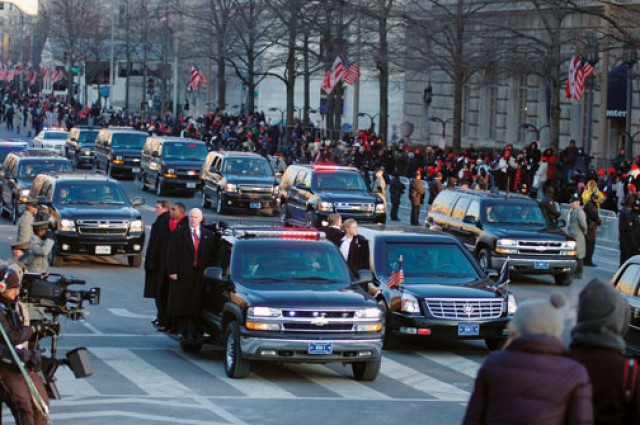

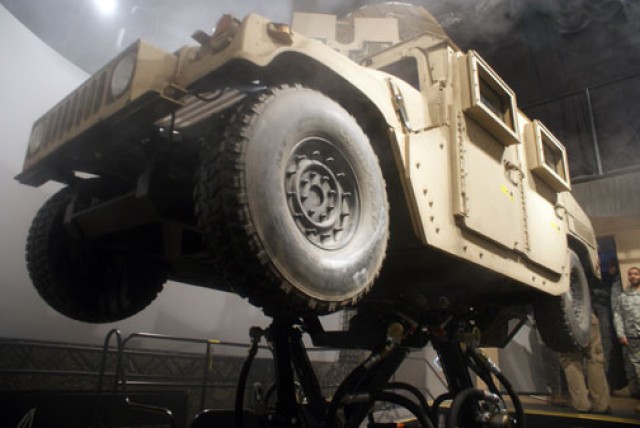


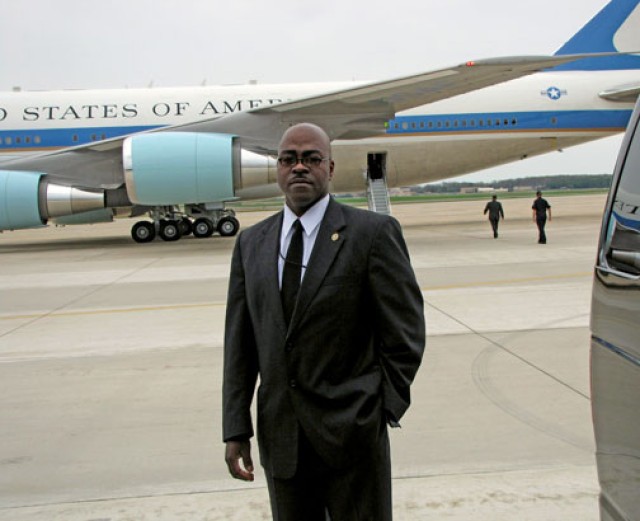


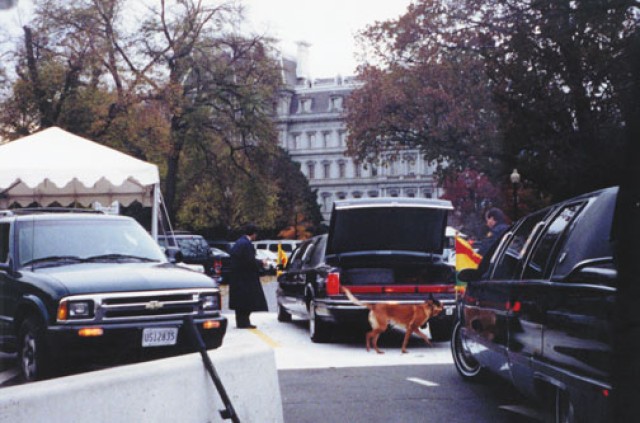
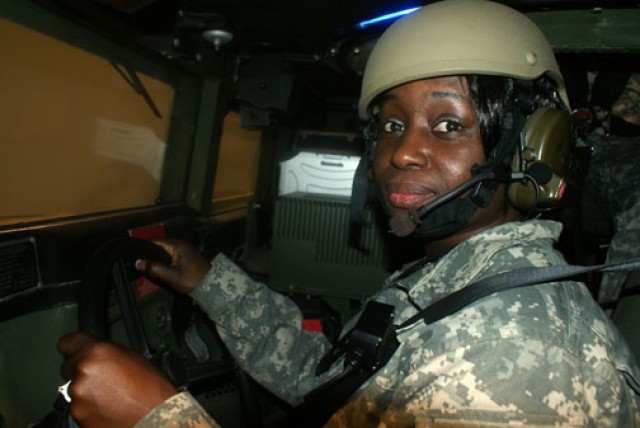
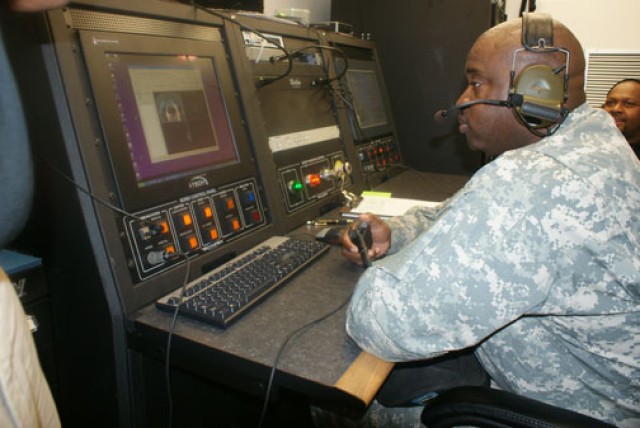
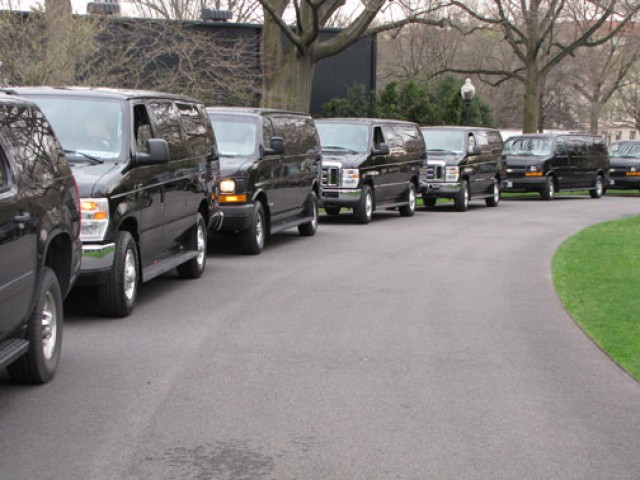



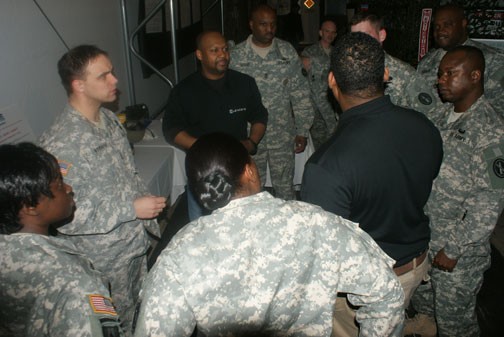








Social Sharing